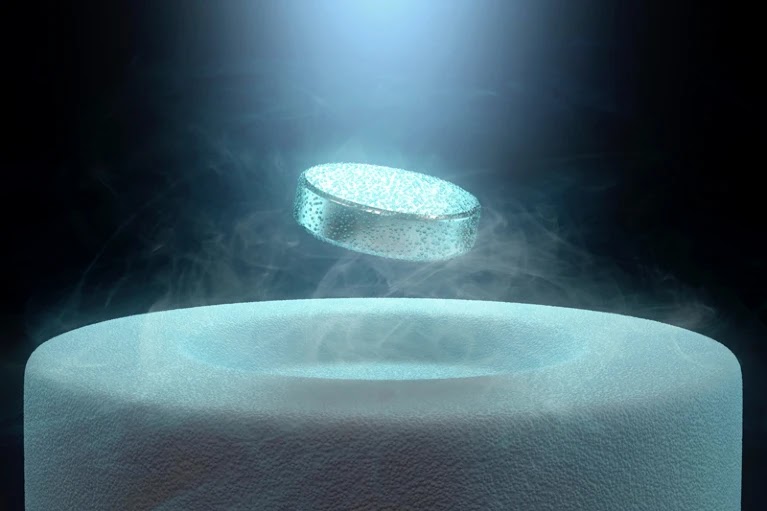Tuesday, October 4, 2022
Retraction undermines the bold claim by physicists who said their material conducted electricity without resistance at 15 ˚C.
Physicist Ranga Dias at the University of Rochester in New York and his collaborators stirred interest but also caution with a 2020 Nature paper1 reporting the creation of a superconductor that worked at an unprecedented temperature of 15 ˚C. The material was a mix of carbon, hydrogen and sulfur, but to conduct electricity without resistance it had to be squeezed between the tips of two diamonds, to 2.6 million times atmospheric pressure.
Superconductors can carry large electric currents without producing any waste heat, and are key to many scientific and medical applications; they might also be crucial to future energy-saving technologies. But most superconductors work only at temperatures approaching absolute zero (–273 ˚C). Only in recent years have physicists managed to get some to work above 0 ˚C, using high-pressure anvils. NEWS 27 September 2022 Stunning room-temperature-superconductor claim is retracted Retraction undermines the bold claim by physicists who said their material conducted electricity without resistance at 15 ˚C.
Davide Castelvecchi Twitter Facebook Email Illustration of a disc-shaped magnet levitating over a doughnut-shaped superconductor with clouds of liquid nitrogen coolant A magnet levitating over a cryogenically cooled superconductor (artist’s concept).Credit: KTSDesign/Science Photo Library A high-profile study in which researchers claimed to have observed the first true room-temperature superconductor has been retracted. Physicist Ranga Dias at the University of Rochester in New York and his collaborators stirred interest but also caution with a 2020 Nature paper1 reporting the creation of a superconductor that worked at an unprecedented temperature of 15 ˚C.
The material was a mix of carbon, hydrogen and sulfur, but to conduct electricity without resistance it had to be squeezed between the tips of two diamonds, to 2.6 million times atmospheric pressure. Superconductors can carry large electric currents without producing any waste heat, and are key to many scientific and medical applications; they might also be crucial to future energy-saving technologies. But most superconductors work only at temperatures approaching absolute zero (–273 ˚C). Only in recent years have physicists managed to get some to work above 0 ˚C, using high-pressure anvils. Dias’s team “used a non-standard, user-defined procedure” in subtracting noise from experimental data shown in two figures, according to the retraction notice published2 on 26 September. “The details of the procedure were not specified in the paper and the validity of the background subtraction has subsequently been called into question.” Nature’s editors retracted the study despite the objections of the study authors.
Through a spokesperson, Dias said that he and his colleagues disagree with the retraction and stand by their results. They plan to resubmit the paper to Nature with the raw-data plots of the figures. “The retraction request does not question the observed physical superconductivity state” of the carbon–sulfur–hydrogen material, said the statement. It pointed to an arXiv preprint posted3 in 2021 that responds to researchers’ concerns and presents the raw data, and added that three teams had replicated elements of the results.


No comments:
Post a Comment